Main image: Mason Cox’s tweet regarding the rumours that give the trade period a life of its own certainly caused a stir. Photo: AAP.
Neil Balme was well into his successful State league coaching career in suburban Adelaide when the frustration that gets so many coaches boiled over. The umpiring decisions in an SANFL game sent him over the edge.
It was the 1980s. There was no after-match media conference with live telecasts. There certainly was no social media on which Balme’s Norwood Football Club could “publish” the post-match, the so-called fifth quarter, for all to hear. And media managers at football clubs did not exist to throw out the “last question” warning when a press conference started to turn controversial.
In fact, it could hardly be described as a media conference. No radio. No television crew. And the Adelaide print media had shrunk to just one newspaper correspondent at each of the five SANFL league games each weekend.
Balme was agitated.
He was questioned on the failings of his players. He “responded” by questioning the umpiring. He threw out the “c” word to bring the integrity of the umpires into question.
“Go on, write that in your notebook,” Balme said while the pen stayed stationary on the ruled paper of the crumpled pad.
“Quote me ….,” added Balme, repeating the claims on the field umpires during an SANFL era in which match officials had become litigious – a point not lost on premiership-winning State-of-Origin coach Graham Cornes when he went down the same path a few years later at some personal cost.
“Now have you got that in your notes,” insisted Balme. He gave every sign that he would take the notebook and scribble the criticism of the umpiring himself.
The inevitable happened. As soon as those quotes hit the printing press, the SANFL administration reacted in an era of fines for any contentious public commentary on match officials. Balme was cited to appear before the league tribunal that had been transformed from a panel, usually of three long-serving football officials, to a lone commissioner, Brian Martin QC.
It was very simple for Balme. He denied making the quoted accusations against the umpires. There was no audio or video evidence for Martin to consider. There was no league advocate asking if there was audio to present to the tribunal commissioner. And there was no SANFL integrity unit with an investigation officer to find it.
A more simple hearing there could not have been. Martin had very little to work with – and no compelling case while Balme pleaded not guilty.
Case dismissed. But not forgotten, particularly during the annual AFL trade period when the game of Australian footballer is subject to the great game of “Believe it or not”. Or handed another library of memorable quotes that inspired Kevin Bartlett to long ago conclude that “lying is the second official language of the AFL”.
Collingwood American recruit Mason Cox started the debate by taking to Twitter while so much was being said about team-mate Adam Treloar’s position with the Magpies, in particular with senior players (wanting the midfielder or not to see out his loaded contract with Collingwood).
“This time of year,” wrote Cox while the AFL trade period was about to open, “is when media loses all respect from me. Rumours become facts and the constant need to be first outweighs validity entirely too often. The consumer of media is also to blame though (sic) for creating it. We live in a ‘I want it now’ world that is only getting worse.”
This time of year is when media loses all respect from me. Rumours become facts and the constant need to be first outweighs validity entirely too often. The consumer of media is also to blame though for creating it. We live in a “I want it now” world that is only getting worse.
— Mason Cox (@masonsixtencox) November 2, 2020
Cox was reacting at the same time Collingwood coach Nathan Buckley also took to social media to react to reports he had told Treloar he needed to leave the Magpie nest, virtually in response to a player vote. He had lost the support of senior players.
Buckley dismissed such saying on Twitter: “The constant rumour and innuendo is disrespectful to Adam, the club and our supporters. FYI, our leaders don’t sit on list management, it’s not their job.”
“Absolute fact”…news to me Sam.
The constant rumour and innuendo is disrespectful to Adam, the club and our supporters.
We’ll continue to communicate directly and sensitively with Adz and his management.
FYI, our leaders don’t sit on list management, it’s not their job.
— Nathan Buckley (@ncb_cfc) November 2, 2020
On being traded and introduced at the Western Bulldogs, Treloar said: “That was told to me in no uncertain way. That did hurt. To be told that when I don’t think that’s the truth …that hurts a bit.”
There also are Collingwood’s conflicting accounts of its interest in Tom Lynch, the former Gold Coast key forward who opted to join Richmond where he has become a premiership hero.
Perhaps Cox would want to revisit – and amend – his tweet. The greater problem seems to be within his own backyard rather than with the media and the fans. Where is the reading on his respect meter for his bosses at Collingwood? Where does Collingwood’s credibility stand today?
PLEASE HELP US CONTINUE TO THRIVE BY BECOMING AN OFFICIAL FOOTYOLOGY PATRON. JUST CLICK THIS LINK.
It is not lost on some of Cox’s Twitter followers that the big Texan made no mention of the main actors in the show – those AFL players, club officials and player agents writing the script for this trade period. That American Constitution amendment about free speech does not absolve anyone from responsibility for their words.
A year ago, Collingwood was denying it had “shopped” Treloar to Gold Coast. Those denials have not held up well either.
Port Adelaide midfielder and former Brisbane captain Tom Rockliff was next on the Twitter stage that, at times, is social media’s equivalent of “Live At The Apollo” from the Hammersmith in London.
Rockliff wrote: “Best part of trade week is just showing how far we have gone from reporting facts to trying to be first to report something. That many say this is going to happen than (sic) they are completely wrong. Let’s all wait and report facts? Best for all involved I reckon is to wait #eggonface.”
Shooting the messenger is an old sport.
The challenge can be posed to Messrs. Cox and Rockliff and their compatriots to change the landscape of Australian football where every mistruth from “club land” is ultimately defended with the theme, “we are protecting a competitive advantage”.
There are weekly AFL injury lists that are greater works of fiction than the Agatha Christie collection – and, remarkably, neither the regulatory bodies nor betting agencies take issue with false information determining gambling markets. Perhaps it will need a lawsuit to make the league – that has an official betting agency delivering a cut of revenue – become reactive to this farce. There was a time when the AFL preferred to be pro-active as an “industry leader”.
For all the “white lies” told in-season, there is no greater Pinocchio festival than the off-season trade period. So much that is denied becomes true … and vice versa.
Josh Dunkley did request a trade from the Western Bulldogs to Essendon.
Remarkably, one television network had its two AFL correspondents send out notes on Dunkley at virtually the same time on grand final evening with starkly contrasting themes. But then it probably is all about the “informant” and which message these singing canaries are seeking to push in the battleground of AFL trades.
Aliir Aliir was leaving Sydney, then was staying and ultimately did accept a simple trade to bolster the Port Adelaide defence.
Orazio Fantasia did seek a go-home move to Port Adelaide from Essendon – just as a young journalist reported accurately more than 12 months before this recent trade period. That video of Fantasia posted on the Essendon Football Club website at the end of last year’s trade period – after Fantasia backed out of joining Port Adelaide to wait for clarity on coach Ken Hinkley’s future at Alberton – now replays like a statement of convenience rather than reality.
Understanding what is true or otherwise in Adam Treloar’s fall at Collingwood is a test of patience considering how extreme each version of the “truth” became while coach Nathan Buckley reacted to media reports. Hence the Mason Cox statement of frustration … without any enlightenment from him as to where fact and rumour strayed apart.
And who “scribbles” this stuff into reporter notebooks?
Trade periods do turn player agents into media stars for a month. There also are those who are bullies … one player manager reportedly threatened to send one media outlet to Coventry if it published a “negative” story on a client. The prospect of being cut off during the trade period is a powerful trigger for censorship.
The most bizarre transformation in professional Australian football during the past decade is of the club official media manager. There has been the hiring of news hounds from traditional media – where jobs are being slashed – to handle an AFL club’s major demands with external media, internal messaging, public relations, presentations with major sponsors and the critical needs of the league’s high-paying official broadcasters in television, digital and radio.
A digital newspaper reporter three weeks ago asked an AFL club media manager of whispers around town declaring one of his organisation’s senior executives was leaving his post. “Not true,” came the forthright reply. A fortnight later, the said executive was posting his farewell notice on social media and corporate bulletin board LinkedIn.
Such behaviour would not have been tolerated by the club media manager when he was working on the other side of the great divide.
The great mystery is how some of these newshounds lose their commitment to transparency, accuracy and even decency when hired to work for an AFL club. One AFL club has a media manager who made his trademark the doorstop interview in the team car park – to secure a sound bite that offered his network a point of difference from the stage-managed all-in media conferences. Yet, as a club media manager he has frowned on such a ploy. He famously has used the line, “Do that again and you will set yourself back 20 years at this club.”
Do as I say … not do as I did.
Mason Cox is right. There is an insatiable appetite for the now. He also eagerly feeds the insatiable audience. His use of his instant Twitter account proves such.
Tom Rockliff is right. There is a race to declare it first. The clickbait world thrives on such, just as the town criers did in an older world without technology.
But there also are people inside the Australian football bubble who take advantage of this landscape – either to gain an edge (that so-called “competitive advantage”) for their club, their client or themselves.
The media makes up the puppets in this show, often quite willingly. This leaves so many media outlets having their credibility used, tested and sometimes tarnished while clubs, agents and players take advantage of a willing carrier pigeon for their warped messages.
And the fans devour it, as highlighted by the year-by-year growth in audience figures for platforms such as AFL Trade Radio. Thank heavens this year had Brownlow Medallist Adam Cooney become the master of mockery with his daily “mega trades” that suggest fiction is often more believable than reality.
The Balme moment from the 1980s highlights how football officials will make a bold statement one day – and deny when there is much more to lose than gain. The old defence of being “misquoted” is fading while so much is done before cameras and on microphones now.
But the “taken out of context” out clause rules today. The debate that follows on social media inevitably swallows up the original statement. And the rush to be first ensures there is a new topic very quickly.
Port Adelaide coach Ken Hinkley – a man who eagerly throws up his team line-ups at media conferences well before the league deadlines – maintains it is much easier to tell the truth than to waste energy on games to seek “a competitive advantage”.
And there is always that challenge of remembering the finer details of the manufactured decoy story.
New Adelaide Football Club chairman John Olsen arrives to AFL football after a life in politics where the “fact check” test with political statements is far more intense than in sport where “white lies” are excused as part of the protocol of battle.
But Olsen notes too many times “the cover up is worse than the crime”. So why bother when time and again the best policy is to plead guilty … and run?
AFL players still take issue with being handed scripts for media conferences. The most amusing push back from a player has come from Collingwood captain Scott Pendlebury when he took to answering his own questions – amid speculation his club was considering scrapping the media all-in sessions to deliver its own carefully presented video packages.
And what is to be made of the precursor to many statements: “To be honest ….”? How is one to know when the speaker is fibbing? Perhaps the warning is when they utter, “Don’t quote me, but …”
Messrs Cox and Rockliff appear eager for change. It is a meritorious ambition.
But the real challenge is inside the tent – to understand the fans can indeed handle the truth. In fact, they crave it. Warts and all.

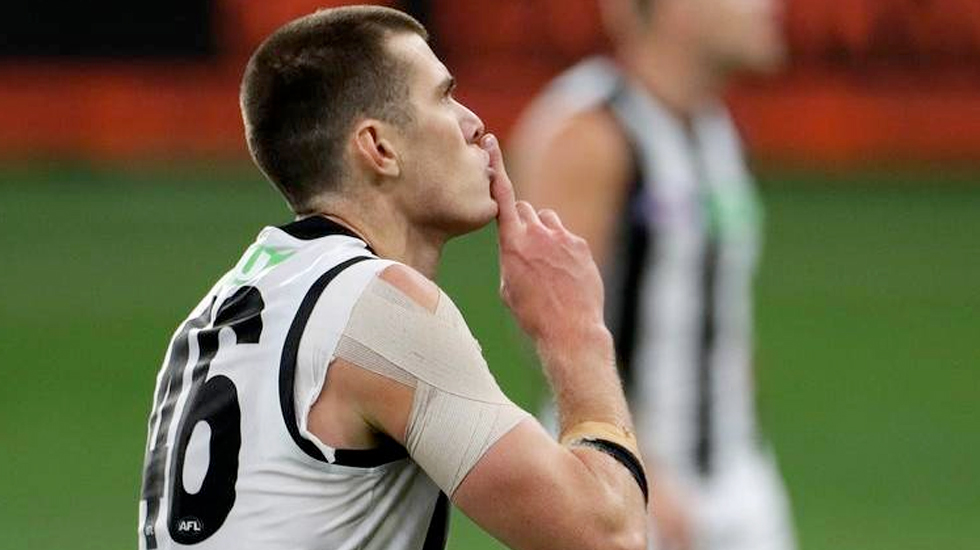
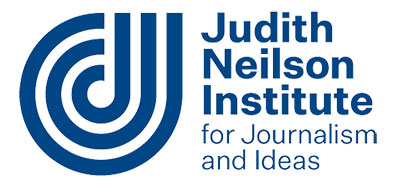
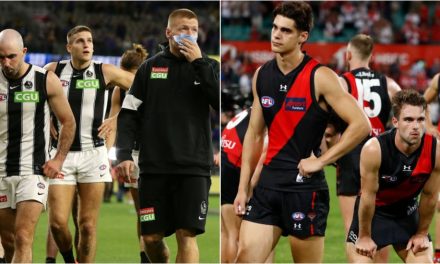

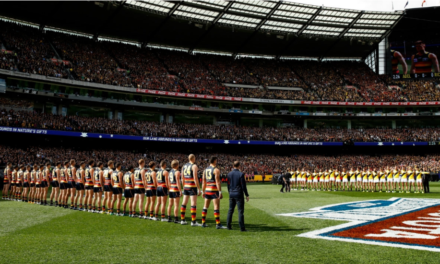
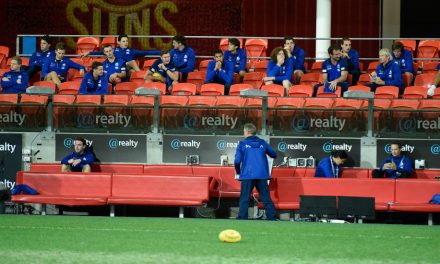

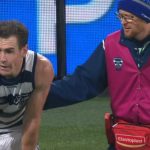

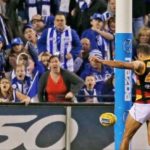


Lying to gain attention first has reached epidemic proportions RoCo.
A fella said to me on Sunday eve in the subject of the mask in Victoria: “if you can’t lie, you can’t be a politician”
It’s the same when club officials talk about trading players or on player injuries: as is rightly covered in the op piece!